Fire, Grass, Mud, Blood
The Montana Volunteer Firefighter
In Montana, there are roughly 9,500 men and women who lead double lives. Chances are you might know one of them. Their everyday existence of mending fence, coaching kids’ soccer or taking a shower can, and will at some point, be rudely interrupted by the incessant chirping of a pager on their belts.
Yes, pagers still exist and they summon those who protect us from just about everything we fear: vehicle accidents, wildfires, heart attacks and our houses burning down. They are part of a proud tradition performing a job for which most will not see a nickel even when they run out on a work meeting or miss tending to a lame horse.
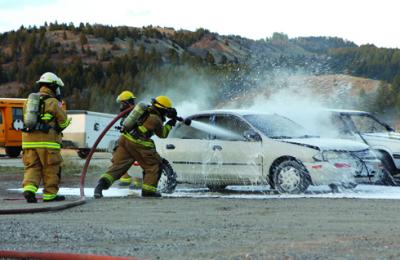
They are Montana’s volunteer firefighters.
What drives people to put themselves in harm’s way for no pay, poor working conditions and disruption of family life and regular routines?
Part of it certainly is the rush — the uncertainty of what will happen next. Or maybe it’s the comraderie felt by the carpenter, engineer, and retired farmer crammed together in the back of a truck at zero dark thirty wearing 40 pounds of gear trundling off to a stranger’s cry for help. Or perhaps it’s that seemingly old-fashioned notion of building community from the ground-up, meeting the basic needs of neighbors on the worst day of their lives.
“I’ve been amazed at how much has to be known,” said Derek Kampfe, 48, a married father of two and new volunteer at Fort Ellis Fire/Rescue outside of Bozeman. “We need to know how to handle hazardous materials, medical, accidents, and multiple kinds of fire. I had no idea fire departments did all of this.”
Kampfe, who works in the meat business, previously lived in Red Lodge and gave back to the community by serving on several boards while his boys were still small. While he felt the work was important, it did not have both the physical and mental challenges he finds at the fire station.
“Being a volunteer firefighter is the ultimate team sport,” Kampfe said. “It allows for specialization but requires great dependence on each other, all focused on a core set of beliefs and values.”
The estimated number of firefighters working in the U.S. is 1,148,100. Of that number, 335,950 are career firefighters and 812,150 are volunteers.
About three quarters of the 1.15 million firefighters in the U.S. are volunteers. In Montana, however, the percentage is much higher. And while many of the duties might be the same across the fire service — paid or volunteer — the Treasure State’s largest cities at least have a broad tax base to support professionally paid departments. Most volunteer departments still augment their budgets with pancake breakfasts hoping that the latest round of federal or state grants might come through to replace that 20-year-old truck.
As the prevalence of structure fires across the U.S. has decreased during the past 25 years due to better building codes and materials, the number of calls for fast medical response has been rising. Many Montana volunteers are cross-trained to provide emergency medical services (EMS) as well. Rural fire departments may choose not to transport patients to the hospital, but their members often are the first responders to help stabilize the situation and begin lifesaving care.
“We respond to a lot of different things,” said Jeremiah Hillier, 34, a captain and 11-year veteran of the Gallatin Gateway Fire Department. Hillier, a welder by trade, says that although the work pulls him away from his two young daughters, he does it because he would want someone to be there for them if they needed help.
Asking regular people to perform sometimes extraordinary tasks can take its toll. While Montana has a relatively low incidence of house fires compared to Chicago or Detroit, it has much higher percentages of trauma from bad roads, high speed limits and low seatbelt law adherence. Throw into the mix one of the highest suicide rates in the nation, dry grassland, tinderbox forests and increasing numbers of houses being built in the wildland interface. Despite training, perseverance and a strong will, the odds often are stacked against Montana’s volunteer firefighters.
Hillier still vividly remembers a mobile home fire in 2004 where he pulled a burned body out of the trailer.
“She was a wheelchair-bound elderly lady,” Hillier recalled. “While it was awful, the autopsy showed she had perished from the smoke before she was burned which made it seem a little better.”
An adage says that if a volunteer reaches the two-year anniversary with their department, they might make it longer. Unfortunately, like the chance of surviving a rollover accident without a seatbelt, many wash out before that. Work pressures, waning support from tired spouses, the grim sight of mangled bodies, neighbors’ domestic strife, and the next call — because there is always a next call — gradually can weaken one’s resolve.
“People seem more willing to open their checkbooks these days than to volunteer,” lamented Hillier, though he is encouraged that his department’s retention is good and he feels their current roster of volunteers is the highest quality it has been during his tenure.
It easily takes two years or more to become somewhat comfortable responding to 911 calls as a volunteer firefighter. Being entrusted to do the same work that others, maybe just one town over, are being paid to do is an enormous responsibility. Many departments train one night per week, which just barely covers the skill sets needed, so often additional training is required.
Rich Cowger, the fire chief in Columbus, sees increased training requirements, increased call volumes, both mother and father working, and the economy all as enemies to recruiting volunteers. Cowger, 41, cut his eye teeth in smaller volunteer departments before taking over as chief in Columbus in 2008. He also serves as president of the Montana State Fire Chiefs Association.
“People’s time is more valuable now than ever,” Cowger said. “Back in the day you saw local business people and the self-employed as volunteers. Now younger folks are more focused and we need to use their time as efficiently as possible.”
Cowger started volunteering in 1993 and was attracted both to the adrenaline rush that each call brings as well as the sense of need and belonging that comes from a disparate group of people bonding for a common good.
“Knowing you can make a difference when the chips are down for someone is what draws most of us to the work,” he said.
One of Cowger’s long-time volunteers, John Marjerison, 43, nearly paid the ultimate price during one of the Columbus area’s most stubborn wildfires, the Derby Fire in 2006. Marjerison, a married father of three and an engineer at the Stillwater Mining Company, was in a safe zone laying a foam layer on houses, when a column of fire crashed on his position out of nowhere. All the firefighters took cover in their trucks and retreated through smoke and flames down a road under zero visibility conditions. The truck he was driving ended up rolling over once and landing on its wheels in the Stillwater River.
“We were the first truck there. One of the guys had his head out the window trying to see the edge of the road for me,” he recalled. “One wheel went off into the soft stuff and then we were down the embankment. Thank goodness no one was hurt seriously.”
Despite stitches in his head and surviving his harrowing ordeal, Marjerison had no intention of turning in his pager.
“To be out there in the mud, blood, dirt and grass with someone who just rolled their car three times, I dig this line of work,” he said. “Being part of something really cool focused on helping someone when they are having a bad day is the biggest thing for me.”
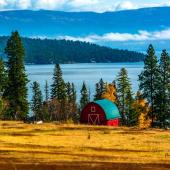
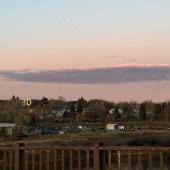
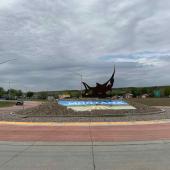
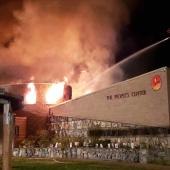








Leave a Comment Here